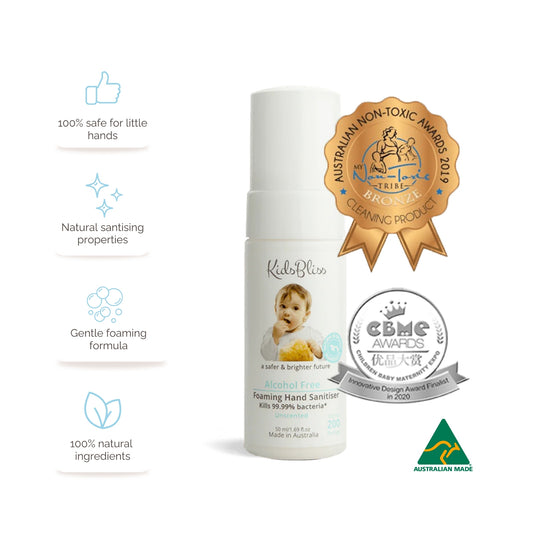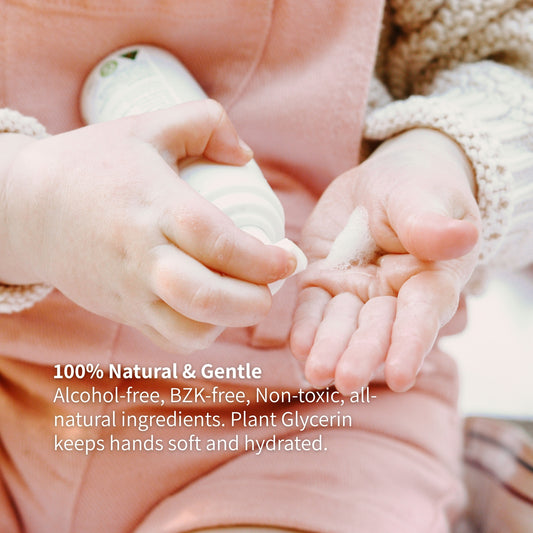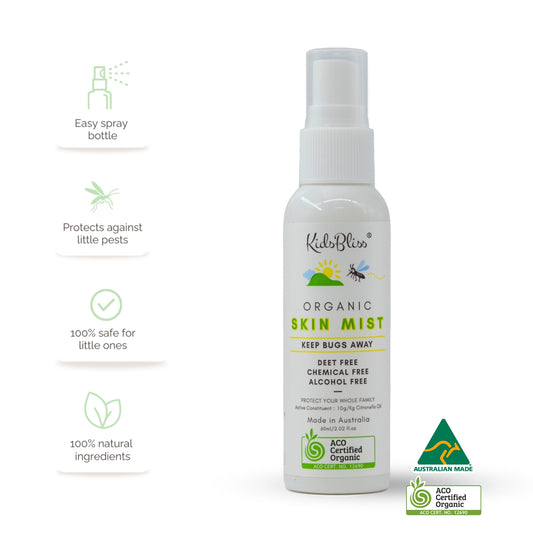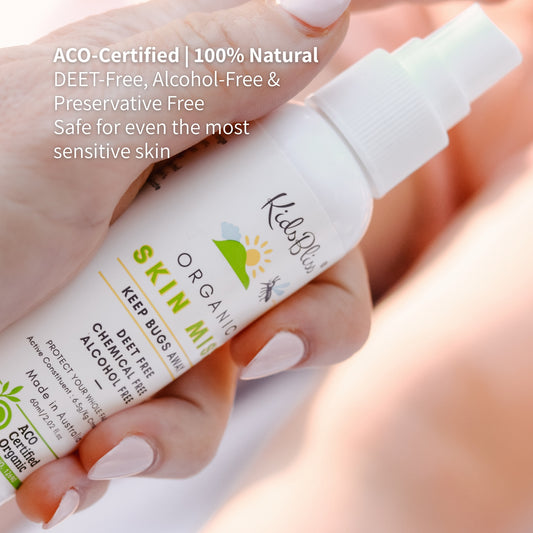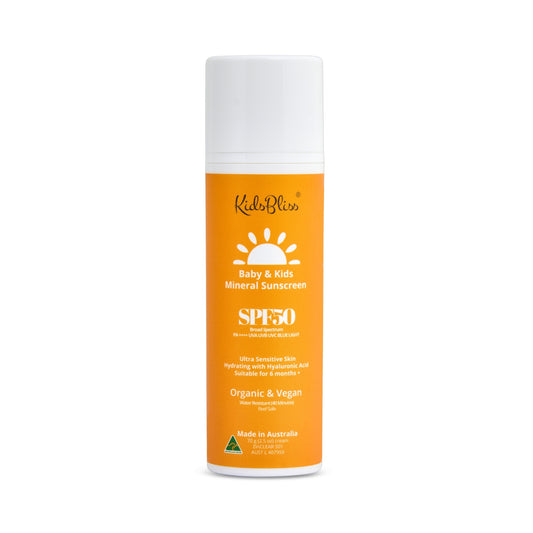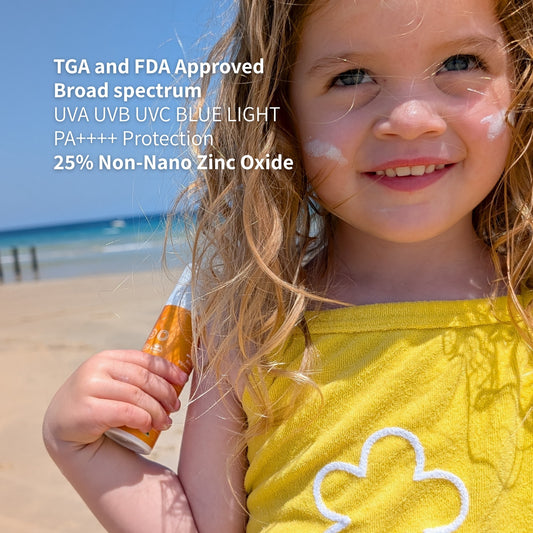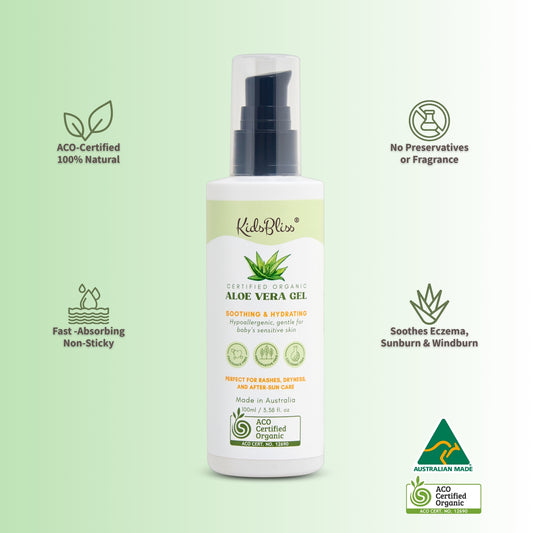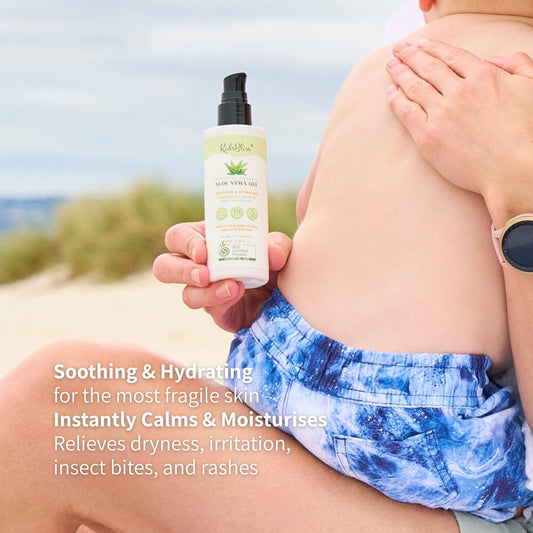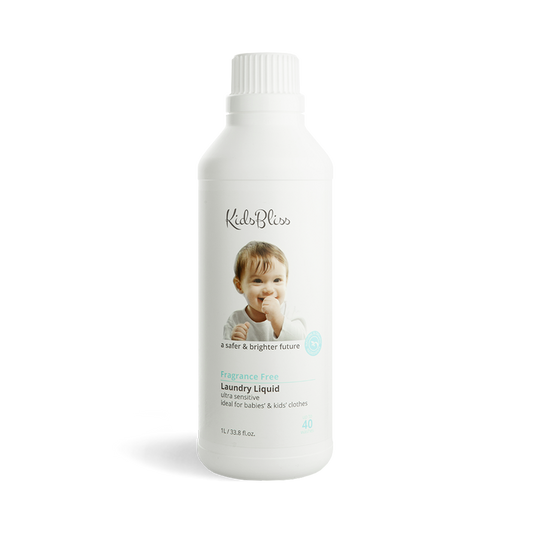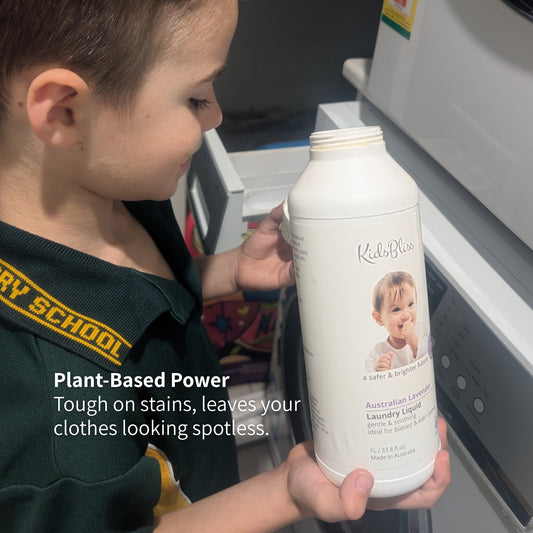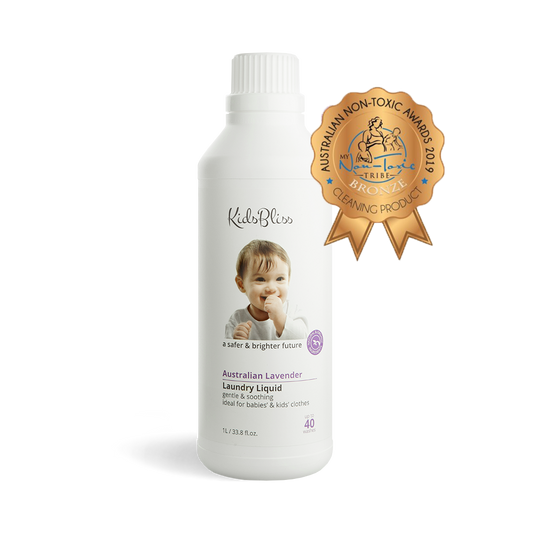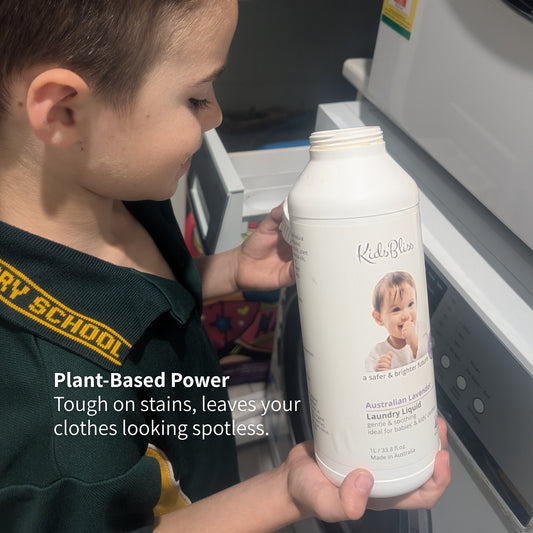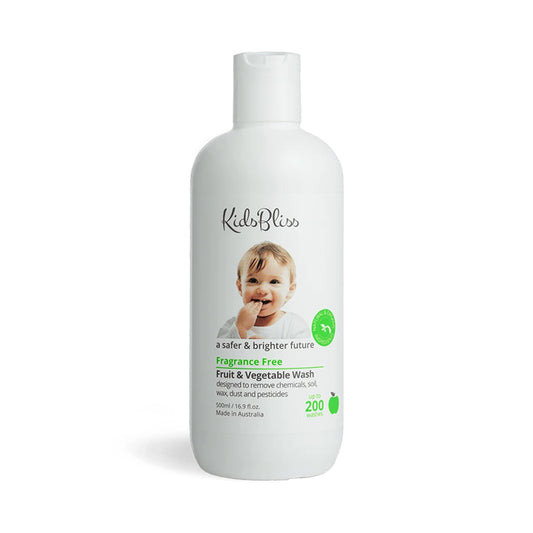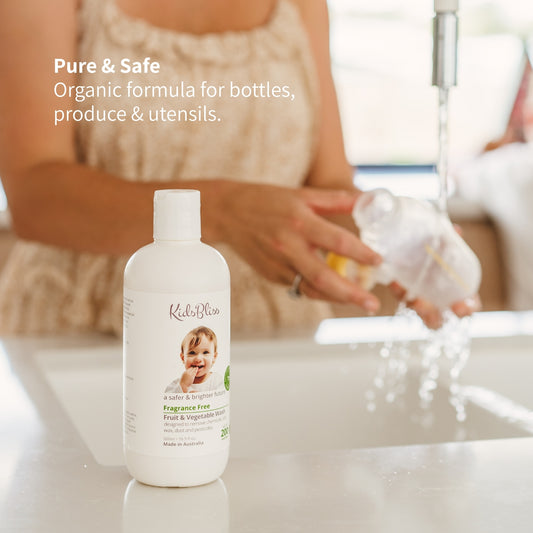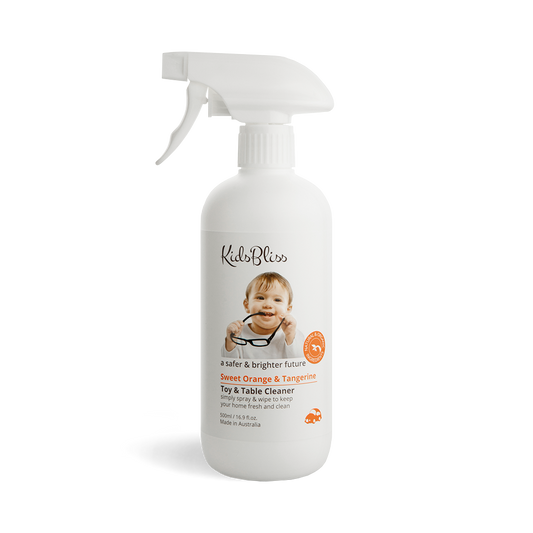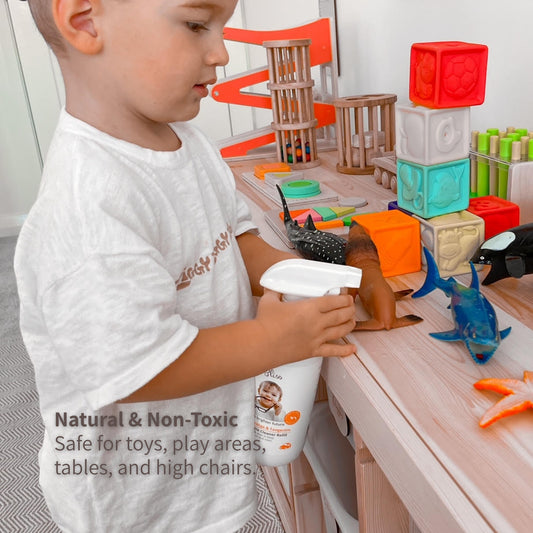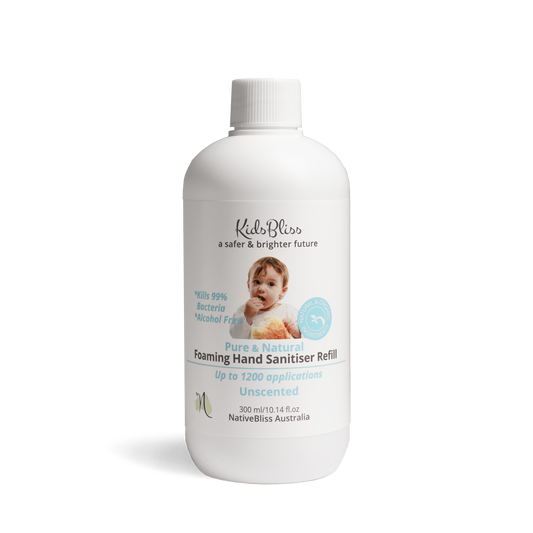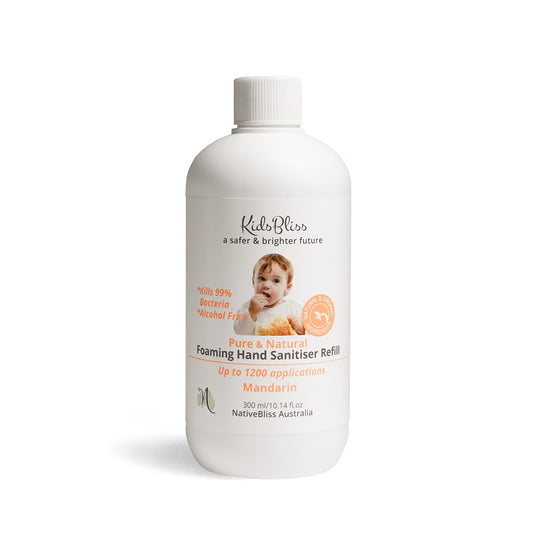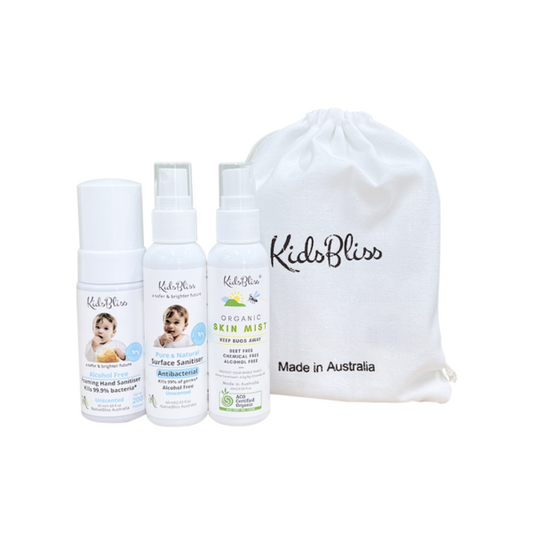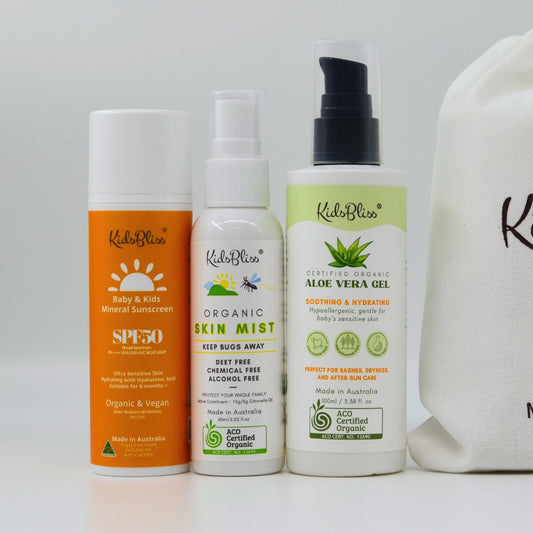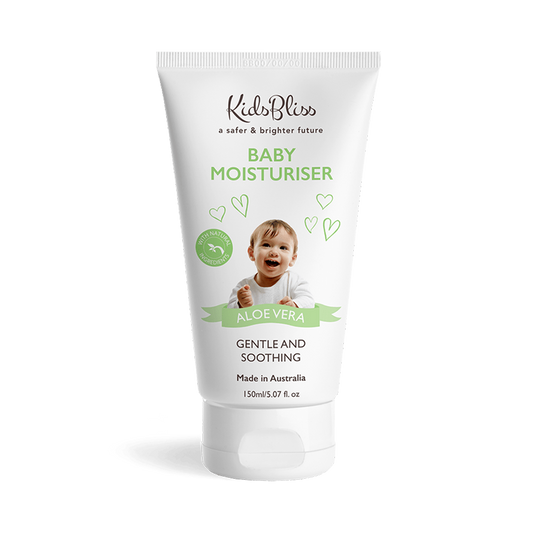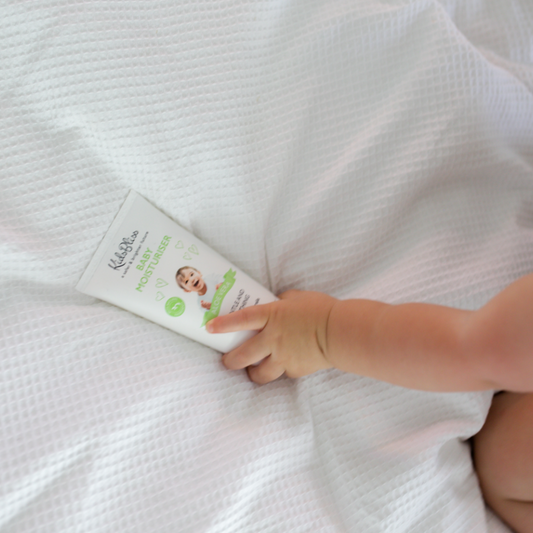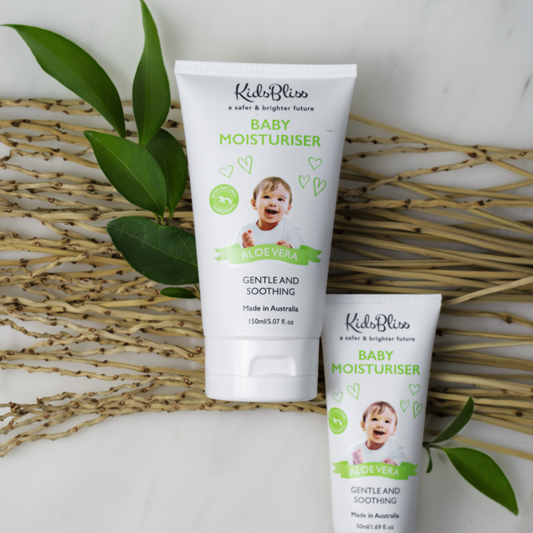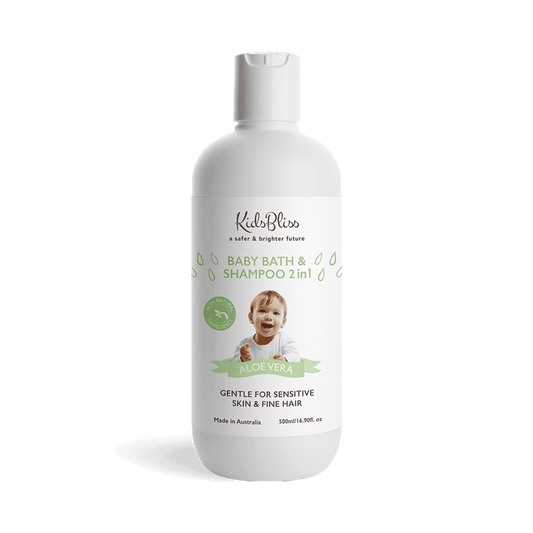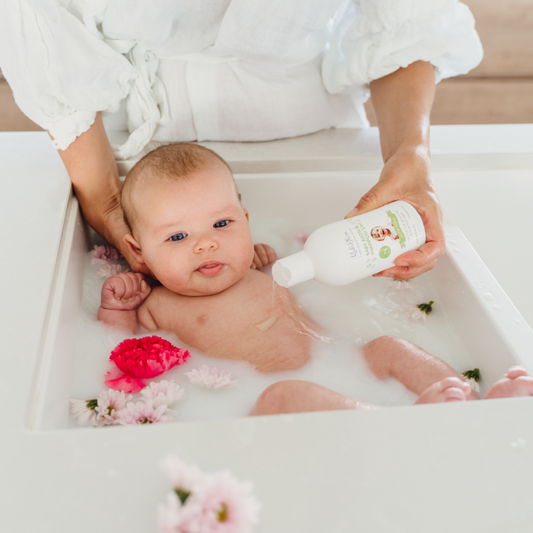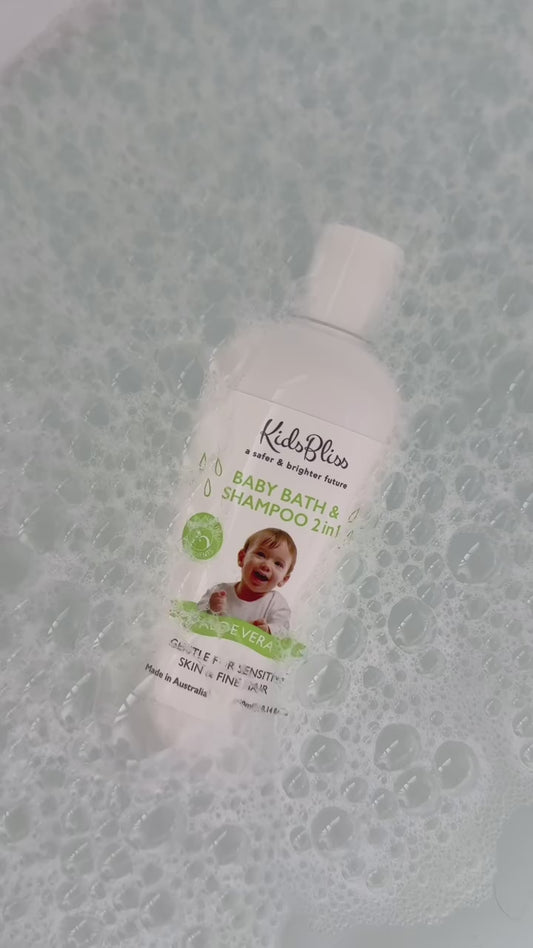🎧 Busy Parent? Listen to the Quick Summary (5 mins)
Part 1: Executive Summary & Clinical Recommendations for Australian Parents
This report analyzes the toxicological and regulatory status of three common chemical ultraviolet (UV) filters—4-Methylbenzylidene Camphor (4-MBC), Homosalate, and Octocrylene—found in many of Australia's top-selling sunscreens.
The primary clinical conclusion is that based on current international toxicological evidence and the unique vulnerabilities of infants and children, none of these three ingredients are recommended for paediatric use.
The risks, detailed in this report, are specific and significant:
-
4-Methylbenzylidene Camphor (4-MBC): Sufficient evidence confirms 4-MBC is an endocrine disruptor with effects on both the thyroid and estrogen systems.1 It has been banned from all cosmetics in the European Union 2 and is deemed "not safe" by UK advisory bodies 4, yet it remains approved and used in Australia, including in products marketed specifically for children.
-
Homosalate: Australia's own regulator, the Therapeutic Goods Administration (TGA), concluded in a 2024-2025 safety review that Homosalate fails to meet the required Margin of Safety (MoS) at its currently permitted concentration.5
-
Octocrylene: This ingredient poses a dual risk. First, it is a known skin sensitizer with allergic reactions "seen, in most cases, in children".7 Second, it degrades over time into Benzophenone 9, a compound classified by the International Agency for Research on Cancer (IARC) as a "possibly carcinogenic to humans".11
Clinical Recommendation for Australian Parents:
-
For Infants (Under 6 Months): Sunscreen is not recommended. The Cancer Council and the Australasian College of Dermatologists advise that protection must come from shade, protective clothing, and hats.12
-
For Children (6 Months and Older): Avoid all chemical sunscreens. Parents should exclusively select physical (mineral) sunscreens. When purchasing, ignore front-of-bottle marketing and read the "Active Ingredients" list. Choose products where the only active ingredients listed are Zinc Oxide and/or Titanium Dioxide.12
Part 2: The 2025 Australian Sunscreen Crisis: A Context of Failed Efficacy and Eroding Trust
The query into the safety of Australian sunscreens does not exist in a vacuum. It is a direct consequence of a systemic and well-publicized failure in their efficacy, which has severely eroded public trust.
In 2025, the consumer advocacy group CHOICE published a report after testing 20 popular Australian sunscreens. The results were alarming: 16 of the 20 products failed to meet their advertised SPF 50 or 50+ claims.19 This investigation, dubbed "#sunscreengate2025" by consumers 22, led to product recalls from major brands like Ultra Violette and Naked Sundays.23
This widespread failure in efficacy, implicating some of the country's best-selling brands, has logically shattered public confidence.21 If a product's primary, TGA-regulated claim of SPF protection is inaccurate, it forces a rational re-evaluation of all other claims, including the safety of their chemical ingredients. The public's query about ingredient safety is a direct and justified consequence of the industry's failure on efficacy.
The TGA's response has been to investigate the variability of the testing methodology itself (ISO 24444:2019).25 The fact that the regulator is reviewing the testing standard suggests the problem is systemic and not isolated to a few non-compliant brands. This environment of regulatory uncertainty and proven marketing failures places a significant burden of due diligence on consumers, particularly parents, to investigate product safety themselves.
Part 3: The Paediatric Imperative: Why "Babies and Kids" Are Not "Little Adults"
To understand the risks of these chemicals, it is critical to first establish the core toxicological principles of paediatric vulnerability. Children are not "little adults"; their bodies interact with chemical exposures in fundamentally different ways.
Principle 1: Systemic Absorption & Body-Surface-Area-to-Volume Ratio
Physical (mineral) sunscreens (Zinc Oxide, Titanium Dioxide) work by forming a barrier on the skin to reflect UV rays.26 Chemical sunscreens, including 4-MBC, Homosalate, and Octocrylene, work by being absorbed into the skin, where they convert UV radiation into heat.12
Studies confirm these chemical filters do not stay in the skin; they are absorbed into the bloodstream 16 and are systemically distributed. They are detectable in human urine and, most critically for child development, in human breast milk.29
This presents a dosing catastrophe for children. Paediatric guidelines recommend liberal sunscreen application to all exposed skin.15 However, an infant or small child has a significantly higher body-surface-area-to-volume ratio than an adult. Therefore, a "correct" application of sunscreen on a child results in a profoundly higher systemic dose (measured in mg of chemical per kg of body weight) than the same application on an adult. Regulatory models, such as the TGA's Australian Sunscreen Exposure Model (ASEM) 30, are generalized and may critically underestimate this specific paediatric dose, rendering their "Margin of Safety" calculations 5 insufficient for this vulnerable group.
Principle 2: Endocrine and Developmental Vulnerability
The ingredients in question, particularly 4-MBC and Homosalate, are identified as potential endocrine-disrupting chemicals (EDCs).32 The endocrine system (governing hormones like estrogen and thyroid) is the master regulator of human growth and development.
Exposing a child to EDCs during critical developmental windows—such as in utero, infancy, or puberty 30—carries a risk of irreversible harm that does not exist for a fully developed adult. This is the foundation of the Precautionary Principle in paediatric toxicology: the threshold for evidence of harm must be much lower when the potential outcome is permanent developmental or reproductive damage.
Principle 3: Immature Metabolism and Bioaccumulation
4-MBC is described in scientific literature as "persistent and bioaccumulative".33 Infants, in particular, have immature liver and kidney function, meaning their bodies cannot metabolize and excrete chemicals as efficiently as an adult's. This can lead to bioaccumulation, where even low daily doses build up to toxicologically relevant levels over time.
The detection of these chemicals in human breast milk 30 confirms a direct maternal offloading and an ingestion pathway for the nursing infant, bypassing even the limited protection of the skin barrier.
Part 4: Toxicological Deep Dive I: 4-Methylbenzylidene Camphor (4-MBC / Enzacamene)
Health Risk Profile
4-Methylbenzylidene Camphor (4-MBC), also known as Enzacamene, is a chemical UVB filter.36 In April 2022, the European Commission's Scientific Committee on Consumer Safety (SCCS) published a final opinion on 4-MBC. It concluded that "there is sufficient evidence that 4-MBC may act as an endocrine disruptor and has effects on both the thyroid and estrogen systems".1
Further research confirms its wide-ranging biological effects, including interactions with estrogen and progesterone receptors, activation of inflammatory pathways, and the inhibition of DNA repair, with effects noted even at low doses.33
The Global Regulatory Divide
The international regulatory response to this evidence has been definitive, creating a stark contrast with Australia's position:
-
European Union: 4-MBC is officially banned. As of May 1, 2025, no new cosmetic products containing 4-MBC can be placed on the EU market, and all existing products must be removed from shelves by May 1, 2026.2
-
United Kingdom: A 2025 review by the UK's Scientific Advisory Group on Chemical Safety (SAG-CS) concluded that 4-MBC "cannot be considered safe for use in cosmetic products" due to endocrine disruption and genotoxicity concerns.4
-
United States: The FDA does not recognize 4-MBC (Enzacamene) as "Generally Recognized as Safe and Effective" (GRASE).29
-
Australia: 4-MBC remains an approved active ingredient in therapeutic sunscreens at concentrations up to 4%.4
Direct Paediatric Risk
The risk to children is twofold. First, as an endocrine disruptor, it poses a threat during key developmental windows. Second, it is directly passed to infants. 4-MBC has been detected in human breast milk samples at concentrations ranging from 2.10 to 134.95 ng/g lipid 29, confirming a direct exposure route. Based on early evidence, the Danish EPA advised as far back as 2001 that sunscreens containing 4-MBC "should not be used on children under 12 years of age".40
The reason for Australia's regulatory lag appears to be a reliance on outdated evidence. The TGA's public-facing safety alerts 40 heavily reference an old 2001 European (SCCNFP) opinion which dismissed the early endocrine disruption studies. However, that 2001 opinion has been formally superseded by the new 2022 SCCS opinion 1, which confirmed the risks and led directly to the EU ban.2 The TGA is aware of this discrepancy 39, but regulatory change has been slow. This means Australian safety standards are, at present, based on 20-year-old data that has been officially rejected and replaced by its original source.
Part 5: Toxicological Deep Dive II: Homosalate
Health Risk Profile
Homosalate is an oil-soluble chemical sunscreen agent that protects against UVB rays.42 Like 4-MBC, it has been flagged for potential endocrine-disrupting properties.32 It is known to penetrate the skin 16, and FDA studies have confirmed its systemic absorption into the bloodstream.32
The TGA's Margin of Safety (MoS) Failure
The most significant finding regarding Homosalate comes from Australia's own regulator. The TGA recently conducted a Safety Review of Seven Active Sunscreen Ingredients.5 This review determines safety based on a "Margin of Safety" (MoS), which must be 100 or more. This means the safe level of human exposure must be 100 times lower than the dose that causes no adverse effects in animal studies.5
The TGA's review concluded that at Australia's current maximum permitted concentration (15%), Homosalate's Margin of Safety was below 100.6
As a direct result of its own findings, the TGA is now recommending "regulatory controls... to restrict" the permitted concentration of Homosalate in all Australian sunscreens.5
The Global Regulatory Divide
This TGA finding brings Australia's regulations more in line with Europe, which has already acted.
-
Australia: Currently permits Homosalate at 15% 6, though this is now under review.
-
European Union: Based on its own safety assessment, the EU enacted stricter limits. From January 2025, Homosalate is only permitted in face products (not sprays) at a much lower maximum concentration of 7.34%.30
This situation creates a "double-dose" problem for Australian consumers. The TGA's own safety model (ASEM) confirms that "Australians apply sunscreen more often and in larger amounts than populations in other countries".30 This high-use pattern, combined with an ingredient (Homosalate) that already fails the TGA's safety margin for the general population 6 at a concentration (15%) twice as high as the EU limit 46, creates an unacceptable risk.
For a paediatric user, who has a higher systemic absorption rate (as detailed in Part 3), this failed safety margin is amplified. If the ingredient is already deemed to have an insufficient safety margin for the general adult population, it cannot be considered safe for an Australian child.
Part 6: Toxicological Deep Dive III: Octocrylene (and its Degradant, Benzophenone)
Octocrylene presents two distinct health risks: a direct risk of skin sensitization in children and an indirect risk from its carcinogenic degradation product.
Risk 1: Direct Paediatric Skin Sensitization
Octocrylene is a chemical UV filter.32 While the TGA's recent Safety Review of Seven Active Sunscreen Ingredients concluded Octocrylene itself was "low risk" 5, this finding overlooks a significant body of clinical evidence regarding its allergenic potential.
Scientific literature notes it has "considerable allergenic potential" 8 and is linked to high rates of skin allergies 43 and allergic contact dermatitis.47 Critically, this risk is specifically concentrated in the paediatric population. Clinical reviews state that contact allergy to Octocrylene is "seen, in most cases, in children".7 One case report detailed a one-year-old boy experiencing a severe erythematous, pruriginous eruption (an itchy red rash) after the application of an Octocrylene-containing sunscreen.48
Risk 2: The Hidden Degradant - Benzophenone
A more insidious risk is that Octocrylene is chemically unstable. It is known to degrade over time, both in the product and on the skin, to form Benzophenone.9
This is a serious toxicological concern because Benzophenone is classified by the International Agency for Research on Cancer (IARC) as a Group 2B "possibly carcinogenic to humans".11
This degradation is not a minor trace issue. One study found that after accelerated stability incubation (simulating aging), Benzophenone levels in commercial sunscreens rose as high as 461.4 parts per million (ppm).10 This presents a scenario where a sunscreen that is "safe" on the day of manufacture may become "possibly carcinogenic" as it ages in a warehouse, on a store shelf, or in a medicine cabinet.
This has created a regulatory silo. While the TGA's Seven Ingredient Review cleared Octocrylene 5, the TGA is simultaneously conducting a separate safety review on Benzophenone as an impurity and degradant.9 This disconnect means that the "parent" compound is approved for use while its known "child" compound is being investigated as a carcinogen. The expiry date on an Octocrylene-based sunscreen is therefore not just a measure of SPF efficacy, but a critical deadline for toxicological safety—a risk that is never communicated to the consumer.
Part 7: Product Ingredient Audit: "Top-Selling" Australian Sunscreens
These three chemical filters are not in obscure or niche products. They are the active ingredients in many of Australia's most popular and trusted "top-selling" brands, including those specifically marketed for children and sensitive skin.
This analysis reveals a profound disconnect between marketing and toxicological reality. A parent sees a product labeled "Kids" or "Sensitive" and assumes it has been formulated for paediatric safety. This assumption is incorrect.
The most flagrant example is the Cancer Council Kids SPF 50+ sunscreen. Ingredient lists for this product confirm it contains 4-Methylbenzylidene Camphor at 4% w/w (the maximum permitted concentration) and Octocrylene at 4% w/w.37 This means a parent purchasing a "Kids" sunscreen from Australia's most trusted cancer authority is applying an EU-banned endocrine disruptor (4-MBC) and a known paediatric skin sensitizer (Octocrylene) to their child's skin. This demonstrates that "Kids" branding is a marketing device, not a guarantee of paediatric toxicological safety.
The following table identifies the presence of the three query ingredients in popular sunscreens available in Australia, based on ingredient lists.
Table 1: Chemical Filter Audit of Popular Australian Sunscreens
| Brand & Product Name | Marketed For | Contains 4-MBC? | Contains Homosalate? | Contains Octocrylene? |
| Cancer Council Kids SPF 50+ | Kids ("Delicate Skin") |
Yes (4% w/w) 37 |
No |
Yes (4% w/w) 37 |
| Cancer Council Ultra Sensitive Kids SPF 50+ | Kids ("Eczema Prone") | No |
Yes (8% w/w) [53] |
Yes (6% w/w) [53] |
| Cancer Council Active SPF 50+ | Active |
Yes [54, 55] |
No |
Yes [54, 55] |
| Banana Boat Kids Clear Spray SPF 50+ | Kids | No |
Yes (10%) [56] |
Yes (6%) [56] |
| Banana Boat Kids Tear-Free Lotion SPF 50 | Kids | No |
Yes [57] |
Yes [57] |
| Banana Boat Kids Sport Lotion SPF 50+ | Kids (Sport) | No |
Yes (10%) [58] |
Yes (5%) [58] |
| Banana Boat Baby / Kids Mineral SPF 50+ | Kids / Baby |
No (Mineral Filter) 59 |
No (Mineral Filter) | No (Mineral Filter) |
| Nivea Sun Kids Protect & Care (Roll-on) | Kids | No |
Yes [61] |
No [61] |
| Nivea Sun Kids (UK/EU Formula) | Kids | No | No |
No (Explicitly stated) 62 |
| La Roche-Posay Anthelios Wet Skin SPF 50+ | General | No |
Yes [64, 65, 66] |
Yes [66] |
| La Roche-Posay Anthelios Kids SPF 50 (US) | Kids | No |
Yes (13%) [67, 68] |
Yes (10%) [67, 68] |
| Neutrogena Ultra Sheer Body Lotion SPF 50 | General | No |
Yes (10% w/w) [69, 70, 71] |
Yes (6.5% w/w) [69, 70, 71] |
| Neutrogena Beach Defence SPF 50 | General | No |
Yes (15%) [72, 73, 74] |
Yes (10%) [72, 73, 74] |
| Bondi Sands SPF 50+ Fragrance Free | General | No |
Yes (10%) [42, 75, 76] |
Yes (8%) [42, 75, 76] |
| Bondi Sands Face SPF 50+ | Face | No |
Yes (10%) [77, 78] |
Yes (8%) [77, 78] |
Note: Formulations can change. This audit is based on publicly available 2024-2025 ingredient lists.
This table confirms that the query ingredients are not exceptions but the norm in Australia's top-selling chemical sunscreens. It also highlights that some brands (e.g., Nivea) sell different formulations in different regions, explicitly removing Octocrylene for the European market 62, while other brands (e.g., Banana Boat) offer safe, mineral-only alternatives alongside their chemical-based "Kids" products.59
Part 8: Clinical Recommendations and Guidance for Australian Parents
Given the clear toxicological risks, the proven inadequacy of marketing labels ("Kids"), and the ongoing regulatory lag in Australia, parents must adopt a defensive and educated approach to sunscreen purchasing.
1. The Gold Standard: Mineral (Physical) Sunscreens
The expert consensus from paediatric dermatologists and toxicologists is to avoid chemical sunscreens for children and instead use mineral (physical) sunscreens.12
-
Mechanism: Mineral sunscreens use active ingredients Zinc Oxide and/or Titanium Dioxide.26
-
Safety: These ingredients form a physical barrier on the surface of the skin that scatters and reflects UV rays.26 They are not designed to be absorbed, are not systemically active, and are not associated with endocrine disruption.16 This simple mechanism eliminates the risks of systemic absorption and hormonal interference.
2. How to Read a Sunscreen Label (The "Active Ingredients" Test)
Parents must ignore all front-of-bottle marketing. Claims of "Kids," "Baby," "Sensitive," or "Dermatologist-Approved" are not reliable indicators of toxicological safety.
-
Turn the product over and find the "Active Ingredients" list.
-
AVOID the product if this list contains any of the following:
-
4-Methylbenzylidene Camphor (or Enzacamene)
-
Homosalate
-
Octocrylene
-
Oxybenzone (or Benzophenone-3) 32
-
Octinoxate (or Octyl Methoxycinnamate) 32
-
-
CHOOSE the product if the only active ingredients listed are:
-
Zinc Oxide
-
Titanium Dioxide 17
-
3. Age-Specific Paediatric Guidance
-
Infants (Under 6 Months of Age):
-
A firm rule: Do not use any sunscreen. The skin of an infant is highly absorptive.12
-
This is the official consensus recommendation of the Cancer Council Australia 13 and the Australasian College of Dermatologists.12
-
Protection must be achieved by keeping the infant in dense shade and using protective, tightly-woven clothing and wide-brim hats.15
-
-
Children (6 Months and Older):
-
Sunscreen is the last line of defence, not the first. The primary protection should always be seeking shade, wearing protective clothing, and using a broad-brim hat.12
-
For small areas of exposed skin, use a mineral-based (Zinc Oxide/Titanium Dioxide), fragrance-free, broad-spectrum SPF 50+ sunscreen.
-
Always patch test a new sunscreen on a small area of your child's skin (such as the inside of the elbow) to check for any allergic reaction or irritation.12
-
Apply sunscreen 20 minutes before sun exposure and reapply every two hours, or more often if swimming, sweating, or towel drying.15
-
Concluding Expert Opinion
While Australian regulators are beginning to reassess the safety of ingredients like Homosalate, the global toxicological data, particularly from the European Union, is already clear. A significant regulatory gap exists where Australian children are being exposed to chemicals, like 4-MBC, that are banned in Europe due to confirmed endocrine-disrupting properties.
The reliance on these chemical filters in products explicitly marketed with "Kids" branding is a failure of both marketing integrity and public health-focused regulation. The only recourse for a safety-conscious parent is to opt-out of the chemical sunscreen market entirely and choose mineral-based alternatives, which offer effective UV protection without the risks of systemic absorption and hormonal disruption.


